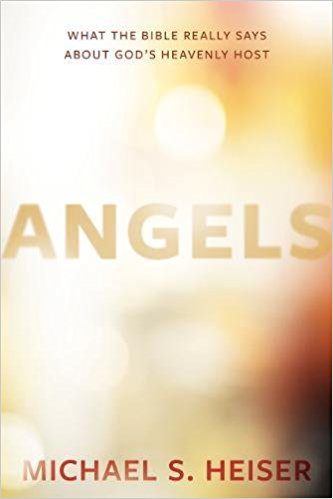Because the NT has less to say about angels than the OT and intertestamental Jewish literature, Heiser’s treatment of the subject is briefer (pp. 116-62), and if I were to have a general criticism of these two chapters, it would be that the NT resources, specifically commentaries, he refers to are in various cases dated. Still, there is much interesting and good discussion here as elsewhere in this book.
One of the initial points Michael makes on p. 116 is that the plural term theoi only occurs eight times in the NT, unlike the proliferation of the term elohim in the OT. But there is a text like 1 Cor. 8.1-6 where Paul talks about gods and lords many, to refer to pagan deities. Paul is following the LXX of Deut. 32.17 here in going on to call them ‘demons’ (or daimons— 1 Cor. 10.21-22). This is the sole use of the term demon by Paul in his letters. The use of the term demons in the Synoptics refers to disembodied evil spirits (see p. 118).
One of the most helpful remarks by Heiser (p. 119) is that Paul mostly uses terms for ranks of angels describing geographical rulership, drawing on Deut. 32 and Ps. 82. So the term archons (rulers), principalities, powers, authorities, dominions, thrones, refer to roles angels play in relationship to human beings and their kingdoms. This is simply more of the notion that angels are assigned governance or watching of nations, with Michael being assigned to Israel itself.
As Heiser goes on to stress ‘angellos’ is a catchall term for supernatural agents of God. Only 4 of 175 uses of this term in the NT refer to fallen angels. (p. 120). Heiser conjectures that in Rev. 1 we may have the only NT instance where ‘THE angel of the Lord’ of Ot fame is mentioned, and he further suggests that if that is correct, then we have one instance where Christ is identified as the angel of the Lord. This view is probably incorrect. In Rev. 1.1ff. the message of God is conveyed to Christ, who in turn, gives it to an angel to deliver to John on Patmos, in view of what follows, about the seven stars=seven angels in the hands of the Son of Man, where the exact same language about angels is used, it should be clear that the author is distinguishing Christ from the angels while identifying him with the Son of Man etc. So in fact, there is no reference in the NT to Christ being the angel of the Lord, and much reason to distinguish the two. The book of Hebrews is quite clear in distinguishing Christ from any and all angels, and further, doesn’t encourage seeing the ones who dined with Abraham as anything other than angels (Heb. 13.2–certainly not the Trinity).
Michael spends considerable time on 1 Cor. 11 and the headcoverings story, favoring the notion that the headcoverings have to do with protecting women from peeping Tom or lusting angels ala Gen. 6.1-4. But of this Paul says nothing. He says the headcovering is meant to cover up human glory (a woman’s hair) so only God’s glory will be evident in worship, and he says its a sign of authorization of women to speak. (pp. 126-27). In short, I’m not buying this theory based on the work of Loren Stuckenbruck.
More helpful is the list of passages from early Judaism where angels rightly refuse worship (Tob. 12.16-22; Apoc. of Zephaniah 6.11-15; Ascen. of Isaiah 7.2, 7.18-23, 8.1-10,15; 3 En. 1.7 etc.) p. 129. What this should tell us is both early Jews and early Jewish Christians quite rightly wanted to distinguish angels from God, angels not being an appropriate object of worship. This trend should make all the more clear that Dan. 7 which refers to the worship of the Son of Man is not an attempt to portray bar enosh as like Metatron ala the two powers in heaven idea.












